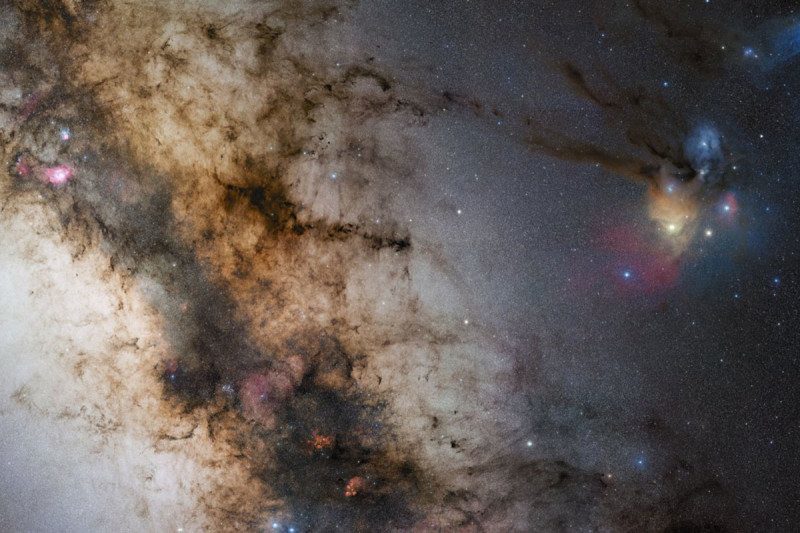
© ESO/S. GuisardDoes a typical galaxy even exist?
It has long been assumed that our galaxy is a classic example of many of the galaxies that pepper the cosmos. That's important, because astronomers have intensely studied the Milky Way and, with this assumption, can use what they find to inform their view of the wider universe.
But what if our neck of the woods isn't that normal after all? It would be a big deal for cosmologists and astronomers. That question is coming to the fore because yet more observations suggest that our galaxy is an "outlier" in important ways. And if it isn't a representative galaxy, a fair chunk of astronomical thinking could be out of kilter.
This all goes back to astronomers' love of putting things into boxes. Objects seen through telescopes are separated into groups, such as planets, stars and galaxies, and then subdivided into smaller and smaller boxes.
Galaxies get lumped into broad categories based upon their gross features - spiral, elliptical or irregular - and are then more finely divided based upon smaller variations, such as just how elliptical their shape is, or how tightly wound their spiral arms are.
Such classification can be powerful as it is used to reveal the underlying physical processes that shaped a galaxy, such as the flow of dark matter and gas over cosmic history. With galaxies grouped this way, we are able to directly test our ideas for galactic formation and evolution.
The Milky Way remains the prime example of such cosmic populations, with astronomers able to map, in detail, the stars, gas and dust that circle the supermassive black hole at its heart. This remains central to ideas of galaxy evolution.
But while many of its observed properties agree with expectations, a number do not. Prominent on this list is the
population of dwarf galaxies that accompany the Milky Way in space.
Growing problemsHints of oddness have been building for years. At the end of the 1990s, theoretical models predicted that our galaxy should have thousands of orbiting dwarf galaxies, but far fewer were seen. This problem came with another: the apparent lack of large satellite galaxies orbiting the Milky Way. Astronomers concluded that the complexities of star formation in the early universe could have messed up the formation process, resulting in what we see today.
More recently, the small number of accompanying dwarfs and the Milky Way's companion galaxy, Andromeda, were found to lie on well-defined planes,
again at odds with theoretical expectation.
The physics of gas in the early universe cannot account for these, with some questioning our underlying ideas of galaxy evolution.Now comes the latest blow. The
Satellites Around Galactic Analogs (SAGA) Survey, has
muddied the waters even further, showing that the dwarf galaxies orbiting Milky Way-like galaxies beyond our group of galaxies are actively forming new stars, while our own dwarfs appear to be sedately ageing with no new stars.
Does this mean that our local environment is somehow quiet, and not representative of the wider universe? That observations of our backyard have little to say about the vast bulk of the cosmos?
It is too early to say for sure, but we are increasingly faced with a dilemma, as our telescopes will continue to reveal distant galaxies in more detail, and it is likely that each will be, in some way, peculiar.
For our ideas of galaxy evolution to survive, they must be able to account for a universe in which every galaxy, like our own Milky Way, is potentially unique. Rather than lament our galactic oddness, let's celebrate this as an exciting challenge brewing in astronomy and cosmology.
Reader Comments
When a scientist does the same we are meant to think how brilliant they are